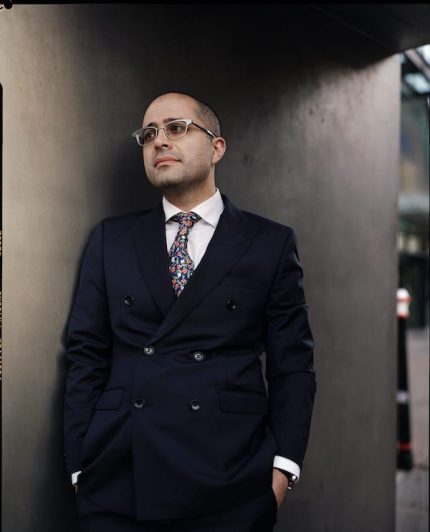Esfahani’s Bach “Variations” illuminating but not exactly live

On Friday night, University of Chicago Presents began streaming a performance of Iranian harpsichord virtuoso Mahan Esfahani playing Bach’s magistral Goldberg Variations. The recital was recorded over two days in late January at the Summer Hall of the Bach Archive in Leipzig. It was originally produced for the University of California, Berkeley’s Cal Performances, who have had it available online since March and will continue streaming it through the beginning of June.
It has been a brutal thirteen pandemic months and counting for classical music around the globe. Musicians’ livelihoods evaporated as concert halls shuttered and series presenters scrambled for alternatives. We should applaud any efforts to keep music in audience’s lives in the face of such tremendous challenges.
That said, something about a pay-walled stream of a pre-recorded performance seems a bridge too far. While the camerawork and lighting are excellent, and UChicago’s executive director, Amy Iwano, gives a gracious on-screen introduction, any atmosphere of a live performance is undetectable.
Esfahani’s reading of Bach’s sublime set had many merits, even if its presentation felt alienated. Goldberg treatments on piano by titans like Glenn Gould were such pillars of the last century’s discography it can be difficult to remember Bach wrote the work for harpsichord.
As an obvious example, each of the 30 Variations is marked either as “a 1 Clav.” or “a 2 Clav.”, indicating the number of harpsichord manuals to be used in its execution. This distinction is lost on the modern piano, where Goldberg interpreters are in for notoriously knotty finger-work. This difficulty evaporates with a double-manual harpsichord — two rows of keys — and a clearer impression emerges of what Bach had in mind (which wasn’t two hands constantly playing one directly on top of the other).
Furthermore, a harpsichord doesn’t naturally sustain, meaning you have to keep playing notes or the music stops. (Think of a violin’s pizzicato.) Ornamentation isn’t just filigree or variation; it’s essential to maintaining sonority.
These factors were prominently on display in Esfahani’s performance, for which he used a 2003 copy of a 1704 Michael Mietke instrument. Of necessity, the opening Aria moved along at a steady clip, conveying motion rather than the aura of placidity and stasis that modern piano interpreters can achieve. At first this was jarring, as was Esfahani’s jerky rubato, but as the performance progressed and one grew acclimated to the distinct instrumental idiom, the reasons for his choices became increasingly clear. At the Aria’s closing return, one felt at home.
The Iranian brought poise and buoyancy to the early variations, with Variation 14 (“a 2 Clav.”) sounding particularly propulsive. Bach withholds any variations in a minor key until the ensuing Variation 15 — halfway through the work — and Esfahani deftly underscored the delayed arrival of the minor mode. The famous Variation 25, also in minor and known as the “Black Pearl,” sounded actually more opalescent at Esfahani’s necessarily faster pace. Taken as a whole, the performance amounted to a compelling claim for how Bach’s intricate canvas was first intended to be read.
Mahan Esfahani’s performance of the Goldberg Variations streams online at UChicago presents through Sunday April 11. Tickets at https://chicagopresents.uchicago.edu/
Posted in Performances




